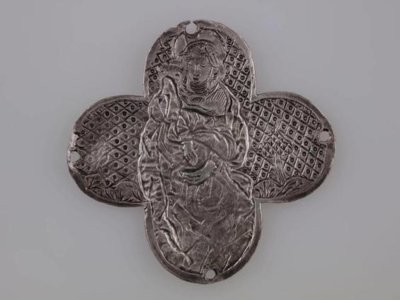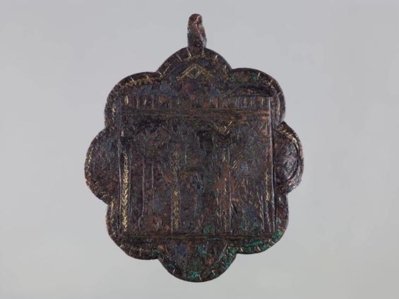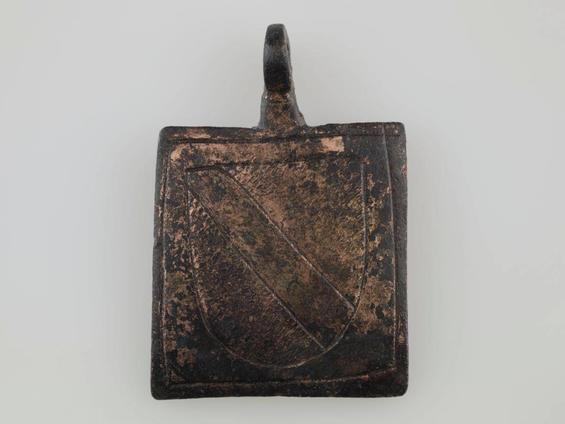Al canviar d'idioma no tots els continguts estan traduïts
The website is not fully translated
Al cambiar de idioma no todos los contenidos están traducidos
Al canviar d'idioma no tots els continguts estan traduïts
 Opening times
Opening times
 Location
Location
 Tickets
Tickets
 Admissions
Admissions
Opening times
Tuesday to Saturday, 10am to 7pm
Wednesdays, 10am to 8pm
Sundays and public holidays, 10am to 2.30pm
The ticket office and entrance are closed 30 minutes before closing time
CLOSED: Mondays that are not bank holidays, 1 and 6 January, 1 May, 18 May, 1 June, 25 and 26 December
Location
Address
Plaça de Pau Vila, 3
08039 Barcelona
Coordinates: 41.380900, 2.185693
Contact
932 254 700
mhc.cultura@gencat.cat
Fax 932 254 758
Group and school bookings:
932 254 244
Monday to Thursday: 10am-2pm and 3.30-5.30pm
Friday: 9.30am-2pm
mhcvisites.cultura@gencat.cat
Transport and access routes
Public transport
Buses V17, H14, D20, V15, V13, 39, 45, 51, 59 and 120
Metro L4 (yellow) Barceloneta
Train to Barcelona Estació de França
Barcelona Tourist Bus: red line; and Barcelona City Tour: eastern route; Museu d’Historia de Catalunya stop.
Parking
There are three paid-for car parks nearby: in Passeig Joan de Borbó, Moll d’Espanya and Moll de la Fusta.
Coaches have parking spaces available near the museum building.
“Bicing” bicycle hire in Plaça Pau Vila.
Admissions
Permanent exhibition
Temporary exhibitions
General admission: 4 euros
Reduced admission: 3 euros
Combined ticket
Permanent exhibition + temporary exhibition
General admission: 8 euros
Reduced admission: 6 euros
 Opening times
Opening times
 Location
Location
 Tickets
Tickets
 Admissions
Admissions
Opening times
Tuesday to Saturday, 10am to 7pm
Wednesdays, 10am to 8pm
Sundays and public holidays, 10am to 2.30pm
The ticket office and entrance are closed 30 minutes before closing time
CLOSED: Mondays that are not bank holidays, 1 and 6 January, 1 May, 18 May, 1 June, 25 and 26 December
Location
Address
Plaça de Pau Vila, 3
08039 Barcelona
Coordinates: 41.380900, 2.185693
Contact
932 254 700
mhc.cultura@gencat.cat
Fax 932 254 758
Group and school bookings:
932 254 244
Monday to Thursday: 10am-2pm and 3.30-5.30pm
Friday: 9.30am-2pm
mhcvisites.cultura@gencat.cat
Transport and access routes
Public transport
Buses V17, H14, D20, V15, V13, 39, 45, 51, 59 and 120
Metro L4 (yellow) Barceloneta
Train to Barcelona Estació de França
Barcelona Tourist Bus: red line; and Barcelona City Tour: eastern route; Museu d’Historia de Catalunya stop.
Parking
There are three paid-for car parks nearby: in Passeig Joan de Borbó, Moll d’Espanya and Moll de la Fusta.
Coaches have parking spaces available near the museum building.
“Bicing” bicycle hire in Plaça Pau Vila.
Admissions
Permanent exhibition
Temporary exhibitions
General admission: 4 euros
Reduced admission: 3 euros
Combined ticket
Permanent exhibition + temporary exhibition
General admission: 8 euros
Reduced admission: 6 euros

Medieval horse decorations
The Museu d'Historia de Catalunya has added to its holdings a medieval collection of horse bridle decorations consisting of ten medallions and two other ornaments dating from between the 13th and the 15th century. The practica of decorating harnesses is almost as old as humans' use of horses, in particular for the purpose of war. The decoration is found mainly on protective elements,such as breast collars and crownpieces,but it is also a feature of other items such as curb bits, reins,bridles and stirrups. This kind of decoration was intended above all to demonstrate the rider's social standing and status as a warrior.
The Middle Ages saw a revival of the decoration of horse harnesses due to the existence of a feudal society that heldthe view that social rank and status were to be demonstrated without restraint. At this time,heraldic devices were also added lavishly to these decorations, giving them an important symbolic content.
The use of these decorativa elements was not restricted to the realm of war, however, but also began to appear prominently as part of the ornamentation of mounts ridden by other people. Horse decorations no longer served just to demonstrate the rider's status as a warrior, but membership of an entire series of the upper strata of society.
In addition to heraldic devices,the metal and hanging ornaments were decorated with a wide range of emblems: plant and geometrical motifs, people, hunting scenes,animals,letters,scrolls and religious images.Sorne of these ornaments were amulets and talismans, as it was thought they would provide protection against misfortune,in particular if they had been blessed. lt was even believed that sorne could improve the horse's capabilities.
In Catalonia, the metal decorations on bridles and the rest of the harness were called xapes, and they were made of silver and copper. In English, they are commonly termed 'brasses' regardless of the metal used.Xapeswere usually gilded and sometimes enamelled using the technique of champlevé, in which sorne of the metal is removed and replaced with enamel. Such xapeswere termed esmalts (enamels). The enamellers of Limoges were famed for their skill in champlevé,but impressive enamelwork was done locally as well.
-

Origen: Cataluña (?)
Datación: Siglos XIV-XV
Material: Cobre champlevé
Medidas: 5 x 5 cm
Número de registro: MHC3767 -

Origen: Península Ibérica
Datación: Siglo XV
Material: Plata
Medidas: 5,5 x 5,5 cm
Número de registro: MHC3768 -

Origen: Península Ibérica
Datación: Siglos XIV-XV
Material: Cobre champlevé
Medidas: 7 x 7 cm
Número de registro: MHC3769 -

Origen: Península Ibérica
Datación: Siglo XIV
Material: Cobre champlevé
Medidas: 6 x 6 cm
Número de registro: MHC3770 -

Origen: Península Ibérica
Datación: Siglos XIII-XIV
Material: Cobre champlevé
Medidas: 6 x 4 cm
Número de registro: MHC3771 -

Origen: Península Ibérica
Datación: Siglos XIII-XIV
Material: Cobre champlevé
Medidas: 4 x 4 cm
Número de registro: MHC3772 -

Origen: Península Ibérica
Datación: Siglos XIV-XV
Material: Cobre champlevé
Medidas: 6 x 4 cm
Número de registro: MHC3773 -

Origen: Península Ibérica
Datación: Siglos XIV-XV
Material: Cobre champlevé
Medidas: 6 x 4 cm
Número de registro: MHC3774 -

Medalla. León
Origen: Península Ibérica
Datación: Siglo XIV
Material: Cobre champlevé
Medidas: 8 x 6 cm
Número de registro: MHC3764
© de la fotografía: CRBMC (Carles Aymerich) -

Origen: Península Ibérica
Datación: Siglo XIV
Material: Cobre champlevé
Medidas: 7 x 7 cm
Número de registro: MHC3765
-
Origen: Cataluña (?)
Datación: Siglos XIV-XV
Material: Cobre champlevé
Medidas: 5 x 5 cm
Número de registro: MHC3767
-
Origen: Península Ibérica
Datación: Siglo XV
Material: Plata
Medidas: 5,5 x 5,5 cm
Número de registro: MHC3768
-
Origen: Península Ibérica
Datación: Siglos XIV-XV
Material: Cobre champlevé
Medidas: 7 x 7 cm
Número de registro: MHC3769
-
Origen: Península Ibérica
Datación: Siglo XIV
Material: Cobre champlevé
Medidas: 6 x 6 cm
Número de registro: MHC3770
-
Origen: Península Ibérica
Datación: Siglos XIII-XIV
Material: Cobre champlevé
Medidas: 6 x 4 cm
Número de registro: MHC3771
-
Origen: Península Ibérica
Datación: Siglos XIII-XIV
Material: Cobre champlevé
Medidas: 4 x 4 cm
Número de registro: MHC3772
-
Origen: Península Ibérica
Datación: Siglos XIV-XV
Material: Cobre champlevé
Medidas: 6 x 4 cm
Número de registro: MHC3773
-
Origen: Península Ibérica
Datación: Siglos XIV-XV
Material: Cobre champlevé
Medidas: 6 x 4 cm
Número de registro: MHC3774
-
Medalla. León
Origen: Península Ibérica
Datación: Siglo XIV
Material: Cobre champlevé
Medidas: 8 x 6 cm
Número de registro: MHC3764
© de la fotografía: CRBMC (Carles Aymerich)
-
Origen: Península Ibérica
Datación: Siglo XIV
Material: Cobre champlevé
Medidas: 7 x 7 cm
Número de registro: MHC3765
Opening times
Tuesday to Saturday, 10am to 7pm
Wednesdays, 10am to 8pm
Sundays and public holidays, 10am to 2.30pm
The ticket office and entrance are closed 30 minutes before closing time
CLOSED: Mondays that are not bank holidays, 1 and 6 January, 1 May, 18 May, 1 June, 25 and 26 December
Location
Address
Plaça de Pau Vila, 3
08039 Barcelona
Coordinates: 41.380900, 2.185693
Contact
932 254 700
mhc.cultura@gencat.cat
Fax 932 254 758
Group and school bookings:
932 254 244
Monday to Thursday: 10am-2pm and 3.30-5.30pm
Friday: 9.30am-2pm
mhcvisites.cultura@gencat.cat
Transport and access routes
Public transport
Buses V17, H14, D20, V15, V13, 39, 45, 51, 59 and 120
Metro L4 (yellow) Barceloneta
Train to Barcelona Estació de França
Barcelona Tourist Bus: red line; and Barcelona City Tour: eastern route; Museu d’Historia de Catalunya stop.
Parking
There are three paid-for car parks nearby: in Passeig Joan de Borbó, Moll d’Espanya and Moll de la Fusta.
Coaches have parking spaces available near the museum building.
“Bicing” bicycle hire in Plaça Pau Vila.
Admissions
Permanent exhibition
Temporary exhibitions
General admission: 4 euros
Reduced admission: 3 euros
Combined ticket
Permanent exhibition + temporary exhibition
General admission: 8 euros
Reduced admission: 6 euros







